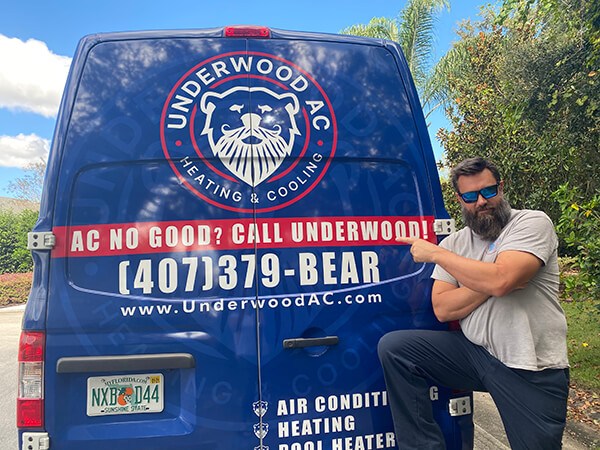
Your thermostat is the brain of your HVAC system, signaling when it should run and when it can turn off. Keeping it set correctly helps keep your home comfortable and manages your utility bills. But what do all the different settings mean, and when and how should you use each?
The Mode
The first thing you will notice is the mode button on your thermostat. This is what controls whether your HVAC system is pumping out hot or cool air.
When it is set to heat mode, it looks for when the temperature drops to engage your heating system. Then, when it reaches the set temperature, it signals for it to cycle off.
The cool mode, on the other hand, is when the system looks to engage the air conditioning. This time, it looks for when the temperature rises above the set temperature to engage the system. It also shuts down once the temperature reaches the set level.
Every thermostat has a range for its settings before it turns on. Newer, digital thermostats tend to have a much smaller range, keeping your home at a more constant temperature. If you have never had your unit calibrated, it may be worth asking during your next routine maintenance visit.
Also, thermostats only last an average of about 10 years. The older it gets, the less accurate it becomes, so you may look at installing a new unit if yours is aging.
Fan Settings
Your thermostat also has a fan setting that controls how your fan runs. The options include “On,” “Auto,” and “Off.”
While “On” might seem like the natural option, this is not actually the best one all the time. Rather, when you turn the fan setting to “On,” the circulating fan runs continuously. This does not mean the burner or AC is continuing to run, just the fan itself.
This helps improve air circulation through your home to help prevent stagnant air. However, it means you will likely clog your air filters more quickly as it runs continuously. You will also wear out your circulating fan motor more quickly and raise your energy costs.
The more common setting is “Auto,” which turns the fan on when the rest of your HVAC system runs. This keeps the utility costs down and reduces overall wear on your system. However, it may lead to air feeling still and uncomfortable, though a couple of ceiling fans can easily solve this problem.
The final setting is “Off,” which shuts down the system entirely. If you are going to swap your air filter, flip this to “Off” to prevent the system from starting up. Any more substantial work on your system should have the power shut off at the breaker to prevent injury.
Temperature and Program Settings
Now you want to set the temperature for your home. Most digital thermostats have both a programmable option and also a manual override.
When you override the program, you may have set the “Hold” option, which offers a temporary or permanent option. Check your thermostat’s manual to understand your specific design so that you can set it appropriately. If it is a permanent setting, keep in mind that this will override your program until you come back and set it again.
A temporary hold usually maxes out at about 12 hours, then reverts to the pre-set program. You can always come back to it and re-engage the program prior to the 12-hour limit.
For the program, there are a number of variations depending on your model, so you will want to check to see what you have. The most basic is the one-week program option, which allows you to set a daily schedule. The problem with this type is it repeats every day, with no options for weekends or other variables.
Then you have the 5-1-1 and the 5-2 options. These allow you to set a specific schedule for the work week, and a different schedule on the weekend. The 5-1-1 option even separates Saturday and Sunday for even more specific control.
Finally, you have the seven-day programming, which allows you to set a different schedule for every day of the week. While these offer the most flexibility, they also seem the most complicated because of the number of settings to work through.
Another option to help get the most from your thermostat is a smart unit. These learn your HVAC behaviors and automatically build your program so that you don’t have to think about it. If you have a remote access unit, you can also easily change settings right from a mobile device.
Your HVAC Professional in Davenport
People around Davenport have turned to Underwood AC LLC for our trusted service and over 30 years of experience. Our clients lean on us to keep them comfortable with reliable heating and cooling services like installation, maintenance, and repair services. Call to schedule your visit with one of our expert techs today.

